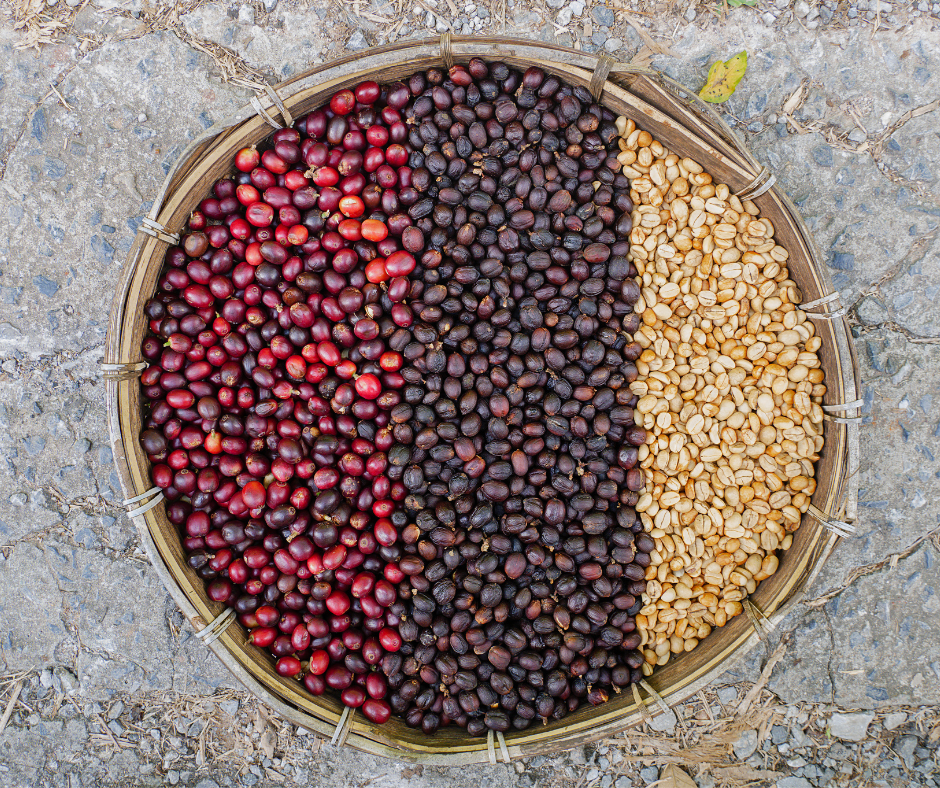
Processing Methods: Washed, Natural, & Honey
Share
Coffee Processing is removing the skin and fruit from the coffee cherry to expose the coffee seed (“bean”) that is inside, then drying the bean to 10-12% moisture before bagging and shipping to Importers and Roasters all over the world.
Coffee processing begins once the ripe fruit is picked from the tree and occurs at the origin it is grown (with the exception of decaffeinating). There are several processing methods, with three being the most popular- Washed, Natural or “Sun-Dried”, and Honey. Wet-hulled is common in Asia & Indonesia, while other experimental methods are gaining popularity. Each method MAJORLY IMPACTS how the coffee will taste in your mug, having even MORE of an influence than the way it is roasted.
Washed Process
The most popular processing method. When the coffee cherry turns bright red and is fully ripe, they are hand-picked from the tree. To assure that only the best cherries are used, they undergo a “float test.” The ones that sink are ready for processing, while those that float have defects and will be discarded. Those that passed the test will be mechanically de-pulped, meaning all of the skin and fruit is removed to fully expose the bean. The beans are then placed in water tanks to ferment and break down the sticky substance (“mucilage”) covering the bean. After about 1-3 days, the beans are removed from the tanks and soaked in water to completely clean off the outside of the beans. The last step is to dry the beans for about 2-3 months before bagging and shipping.
The Washed Processed accentuates the inherent flavors contained in the bean. Conversely, the Natural and Honey processes use the fruit and mucilage to enhance and create flavors. For this reason, many coffee purists consider the Washed method to be superior.
Natural / Sun-Dried
The oldest and simplest processing method. Ripe coffee cherries are hand-picked, then placed on a raised bed or patio to dry in the sun for several weeks allowing a natural fermentation process to occur. Each day, the cherries are regularly raked to prevent mold. Once moisture levels reach about 11%, the fruit is fully removed from the bean using a de-pulping machine.
Since the fruit is on the bean during the several week drying process, this drastically influences the flavor when brewed. The flavors that result are typically very fruit-forward and winey. This process is common in Ethiopia, where coffees already contain inherent fruity flavors.
Honey
Originating in Costa Rica and most common in Central America, this process is a mix between Washed & Natural. Of the three methods, it is the newest and least popular. Ripe coffee cherries are hand-picked, and the fruit is de-pulped from the bean; however, the sticky mucilage is left covering the outside of the bean to naturally breakdown and ferment as the beans dry on raised beds or patios. Like the natural method, the beans are raked regularly to prevent mold.
In Honey processing, there is White Honey, Yellow Honey, Red Honey, and Black Honey. These are respectively named for how much mucilage is left on the bean during the drying process. The names result from the color the beans turn during the drying stage. Typically, the more mucilage, the more fruit-forward the coffee will taste when brewed; however, they will typically not taste as fermented and fruity as Natural Processed coffees. Honeys are known for their sweetness and syrupy mouthfeel.
Conclusion
If you are a regular coffee drinker, you have surely had a Washed coffee since they are most popular; however, if you have not had the chance to try Natural and Honey, I highly recommend you give them a try. You might be surprised at the vast differences in flavors they create. I enjoy mixing it up and drinking them all throughout my week!
Happy Drinking!!!
